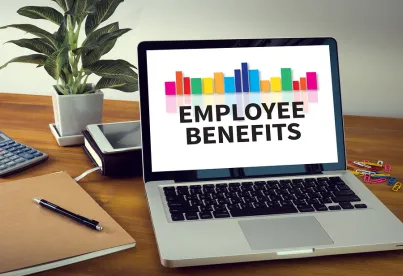On April 28, 2020, the Employee Benefits Security Administration issued Disaster Relief Notice 2020-01: Guidance and Relief for Employee Benefit Plans Due to the COVID-19 (Novel Coronavirus) Outbreak (EBSA Notice).
On the same day, EBSA and the Internal Revenue Service issued a Final Rule regarding Extension of Certain Timeframes for Employee Benefit Plans, Participants, and Beneficiaries Affected by the COVID-19 Outbreak (Final Rule). The Final Rule has been submitted for publication in the Code of Federal Regulations.
The EBSA Notice and the Final Rule address a number of important issues concerning health, welfare and retirement benefits that are relevant to employees, employers, plan administrators and fiduciaries. This Update will focus on issues relevant to health and welfare benefit plan fiduciaries.
The EBSA Notice and General Fiduciary Guidance
The EBSA Notice addresses issues such as retirement plan loans and distributions, participant contributions and loan repayments, blackout notices, and Form 5500 and M-1 filing relief.
The EBSA Notice also provides “General ERISA Fiduciary Compliance Guidance.” This is in two parts: one stating what EBSA expects from plan fiduciaries during the outbreak, and the other stating what relief EBSA may provide to plan fiduciaries during the outbreak.
Regarding what it expects from plan fiduciaries, the EBSA Notice states: “The guiding principle for plans must be to act reasonably, prudently, and in the interest of the covered workers and their families who rely on their health, retirement, and other employee benefit plans for their physical and economic wellbeing. Plan fiduciaries should make reasonable accommodations to prevent the loss of benefits or undue delay in benefits payments in such cases and should attempt to minimize the possibility of individuals losing benefits because of a failure to comply with pre-established timeframes.”
Regarding potential relief to plan fiduciaries, the EBSA Notice states: “In addition, the Department acknowledges that there may be instances when plans and service providers may be unable to achieve full and timely compliance with claims processing and other ERISA requirements. Our approach to enforcement will emphasize compliance assistance and include grace periods and other relief where appropriate, including when physical disruption to a plan or service provider’s principal place of business makes compliance with pre-established timeframes for certain claims’ decisions or disclosures impossible.”
What is unclear from this Notice is whether, and to what extent, courts will allow for grace periods and other relief in claim litigation for claim fiduciaries who fail to comply with a deadline because of the COVID-19 emergency. For example, will a delay in issuing an adverse determination due to the emergency result in a loss of deferential review? As we discuss below, the Final Rule does not address either of those deadlines, so claim administrators are left to use their best judgment about the ramifications of a failure to comply with claim requirements.
The Timeframes Extended By the Final Rule
The Final Rule temporarily extends certain timeframes governing claims for life, health and disability benefits (29 C.F.R. Part 2560), health plan enrollment (29 C.F.R. Part 2590), and post-employment continuation of health coverage (26 C.F.R. Part 54).
In general, the Final Rule only extends the timeframes applicable to participants, beneficiaries and claimants, and (except for COBRA election notices) does not extend timeframes applicable to employers, plan/claim administrators or fiduciaries.
The Final Rule defines an “Outbreak Period,” which is used to determine particular extensions. The Outbreak Period is “the period from March 1, 2020 until sixty (60) days after the announced end of the National Emergency or such other date announced by the Agencies in a future notice[.]” The Final Rule notes that if “there are different Outbreak Period end dates for different parts of the country, the Agencies will issue additional guidance regarding the application of the relief in this notice.”
The Final Rule provides that “all group health plans, disability and other employee welfare benefit plans, and employee pension benefit plans subject to ERISA or the [Internal Revenue] Code must disregard [the Outbreak Period] … for all plan participants, beneficiaries, qualified beneficiaries, or claimants wherever located in determining” certain “periods and dates.” Those “periods and dates” are the following:
(1) The 30-day period (or 60-day period, if applicable) to request special enrollment under ERISA section 701(f) and Code section 9801(f);
(2) The 60-day election period for COBRA continuation coverage under ERISA section 605 and Code section 4980B(f)(5);
(3) The date for making COBRA premium payments pursuant to ERISA section 602(2)(C) and (3) and Code section 4980B(f)(2)(B)(iii) and (C);
(4) The date for individuals to notify the plan of a qualifying event or determination of disability under ERISA section 606(a)(3) and Code section 4980B(f)(6)(C);
(5) The date within which individuals may file a benefit claim under the plan’s claims procedure pursuant to 29 CFR 2560.503–1;
(6) The date within which claimants may file an appeal of an adverse benefit determination under the plan’s claims procedure pursuant to 29 CFR 2560.503–1(h);
(7) The date within which claimants may file a request for an external review after receipt of an adverse benefit determination or final internal adverse benefit determination pursuant to 29 CFR 2590.715–2719(d)(2)(i) and 26 CFR 54.9815–2719(d)(2)(i); and
(8) The date within which a claimant may file information to perfect a request for external review upon a finding that the request was not complete pursuant to 29 CFR 2590.715–2719(d)(2)(ii) and 26 CFR 54.9815–2719(d)(2)(ii).
Additionally, the Final Rule provides: “With respect to group health plans, and their sponsors and administrators, the Outbreak Period shall be disregarded when determining the date for providing a COBRA election notice under ERISA section 606(c) and Code section 4980B(f)(6)(D).”
The Final Rule also provides that additional relief may be provided in the future, as warranted.
Impact of the Final Rule on Life, Health and Disability Plan Fiduciaries
Claim Initiation Timeframes. 29 C.F.R. § 2560.503-1 does not provide a specific minimum timeframe that must be allowed for an individual to file a claim for health or disability benefits. The regulation merely requires that the plan’s “claims procedures do not contain any provision, and are not administered in a way, that unduly inhibits or hampers the initiation or processing of claims for benefits[.]” Most welfare benefit plans establish timeframes within which notice of a claim and/or proof of claim should or must be provided (and many of those timeframes are based on state insurance laws). Under the Final Rule, no matter the timeframes the plan establishes for filing notice and/or proof of claim, the Outbreak Period must be disregarded in determining the filing deadlines.
Administrative Appeal Timeframe. 29 C.F.R. § 2560.503-1(h) provides that a welfare benefit plan must allow claimants at least 60 days following receipt of an adverse benefit determination to appeal. Group health plans and plans providing disability benefits must allow 180 days. Under the Final Rule, the Outbreak Period is disregarded in determining the appeal deadline.
External Review Timeframe. 29 CFR 2590.715–2719(d)(2)(i) and 26 CFR 54.9815–2719(d)(2)(i) provide that group health plans (and non-grandfathered health insurance issuers) must allow claimants at least four months after the receipt of a notice of adverse benefit determination or final internal adverse benefit determination to request an external review. Under the Final Rule, the Outbreak Period is disregarded in determining the timeframe to request an external review.
Examples
The Final Rule provides examples of how to apply the Outbreak Period exclusion to timeframes applicable to welfare benefit claims. (The examples assume that the National Emergency ends on April 30, 2020, and that the Outbreak Period therefore ends on June 29, 2020.)
Example 5 (Claims for medical treatment under a group health plan).
(i) Facts. Individual D is a participant in a group health plan. On March 1, 2020, Individual D received medical treatment for a condition covered under the plan, but a claim relating to the medical treatment was not submitted until April 1, 2021. Under the plan, claims must be submitted within 365 days of the participant’s receipt of the medical treatment. Was Individual D’s claim timely?
(ii) Conclusion. Yes. For purposes of determining the 365-day period applicable to Individual D’s claim, the Outbreak Period is disregarded. Therefore, Individual D’s last day to submit a claim is 365 days after June 29, 2020, which is June 29, 2021, so Individual D’s claim was timely.
Example 6 (Internal appeal-disability plan).
(i) Facts. Individual E received a notification of an adverse benefit determination from Individual E’s disability plan on January 28, 2020. The notification advised Individual E that there are 180 days within which to file an appeal. What is Individual E’s appeal deadline?
(ii) Conclusion. When determining the 180-day period within which Individual E’s appeal must be filed, the Outbreak Period is disregarded. Therefore, Individual E’s last day to submit an appeal is 148 days (180 minus 32 days following January 28 to March 1) after June 29, 2020, which is November 24, 2020.
Example 7 (Internal appeal – employee pension benefit plan).
(i) Facts. Individual F received a notice of adverse benefit determination from Individual F’s 401(k) plan on April 15, 2020. The notification advised Individual F that there are 60 days within which to file an appeal.
What is Individual F’s appeal deadline?
(ii) Conclusion. When determining the 60-day period within which Individual F’s appeal must be filed, the Outbreak Period is disregarded. Therefore, Individual F’s last day to submit an appeal is 60 days after June 29, 2020, which is August 28, 2020.
Takeaways
It is plain to see that welfare benefit plan fiduciaries will have to modify their internal procedures to account for the “tolling” of claim and appeal filing deadlines during the Outbreak Period.
Fiduciaries may want to consider the EBSA guidance that they should make “reasonable accommodations to prevent the loss of benefits or undue delay in benefits payments” and should “attempt to minimize the possibility of individuals losing benefits because of a failure to comply with pre-established timeframes.” These considerations might include evaluations whether extensions of deadlines not required by the Final Rule are warranted, either across-the-board, or on a claim-by-claim basis.
Finally, fiduciaries may wish to evaluate the extent to which any failure on their part to comply with claim-related deadlines (such as the time to render a decision) will be forgiven, either in an enforcement procedure by the EBSA or by a court in claim litigation.



 />i
/>i

